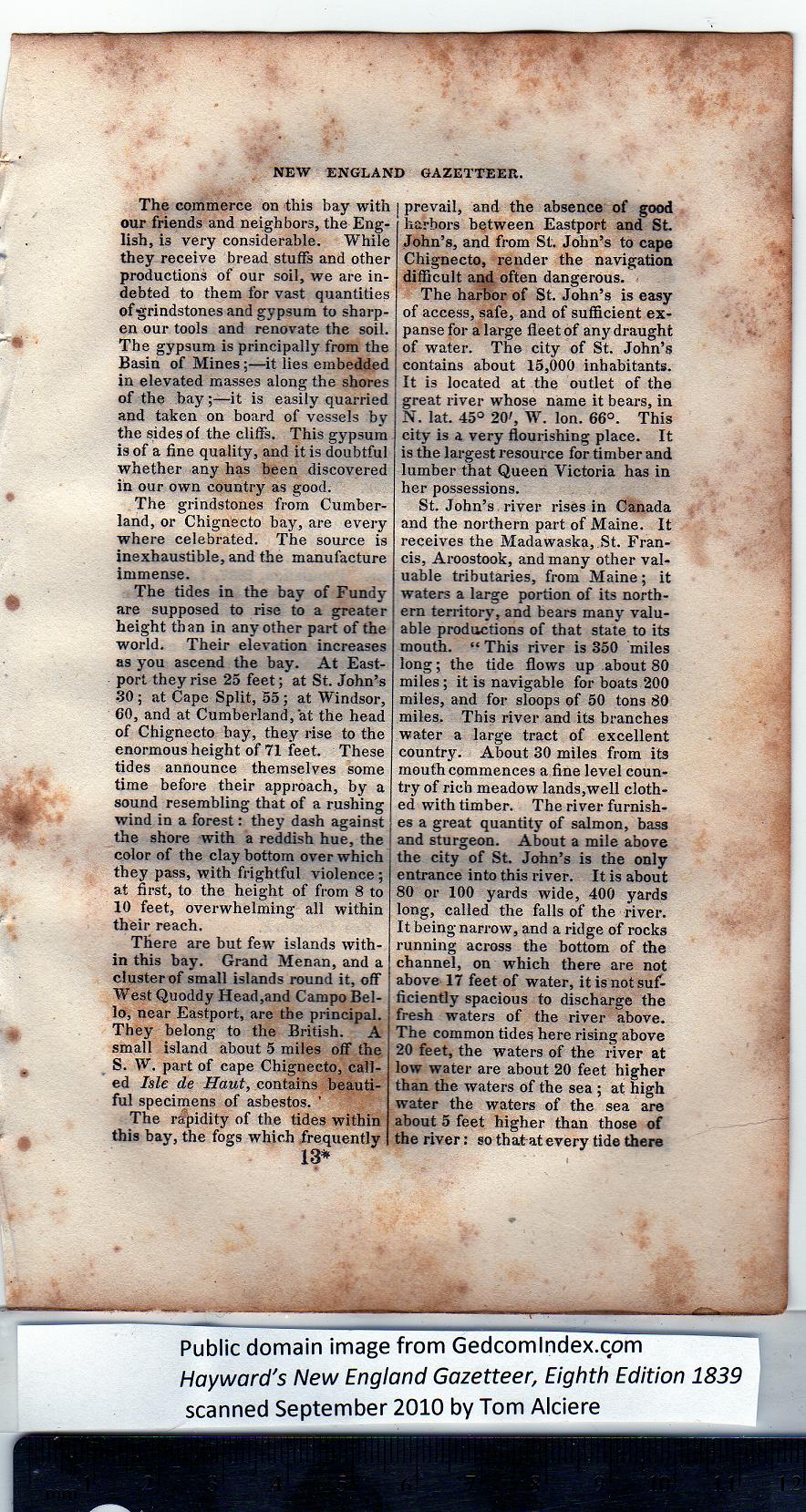|
The commerce on this hay with
our friends and neighbors, the Eng-
lish, is very considerable. While
they receive bread stuffs and other
productions of our soil, we are in-
debted to them for vast quantities
of ■grindstones and gypsum to sharp-
en our tools and renovate the soil.
The gypsum is principally from the
Basin of Mines;—it lies embedded
in elevated masses along the shores
of the bay;—it is easily quarried
and taken on board of vessels by
the sides of the cliffs. This gypsum
is of a fine quality, and it is doubtful
whether any has been discovered
in our own country as good.
The grindstones from Cumber-
land, or Chignecto bay, are every
where celebrated. The source is
inexhaustible, and the manufacture
immense.
The tides in the bay of Fundy
are supposed to rise to a greater
height than in any other part of the
world. Their elevation increases
as you ascend the bay. At East-
port they rise 25 feet; at St. John’s
30; at Cape Split, 55; at Windsor,
60, and at Cumberland, at the head
of Chignecto bay, they rise to the
enormous height of 71 feet. These
tides announce themselves some
time before their approach, by a
sound resembling that of a rushing
wind in a forest: they dash against
the shore with a reddish hue, the
color of the clay bottom over which
they pass, with frightful violence;
at first, to the height of from 8 to
10 feet, overwhelming all within
their reach.
There are but few islands with-
in this hay. Grand Menan, and a
cluster of small islands round it, off
West Quoddy Head,and Campo Bel-
lo, near Eastport, are the principal.
They belong to the British. A
small island about 5 miles off the
S. W. part of cape Chignecto, call-
ed Isle de Haut, contains beauti-
ful specimens of asbestos. ’
The rapidity of the tides within
this bay, the fogs which frequently
13* |
prevail, and the absence of good
harbors between Eastport and St.
John’s, and from St. John’s to cape
Chignecto, render the navigation
difficult and often dangerous.
The harbor of St. John’s is easy
of access, safe, and of sufficient ex-
panse for a large fleet of any draught
of water. The city of St. John’s
contains about 15,000 inhabitants.
It is located at the outlet of the
great river whose name it bears, in
N. lat. 45° 20', W. Ion. 66°. This
city is a very flourishing place. It
is the largest resource for timber and
lumber that Queen Victoria has in
her possessions.
St. John’s river rises in Canada
and the northern part of Maine. It
receives the Madawaska,.St. Fran-
cis, Aroostook, and many other val-
uable tributaries, from Maine; it
waters a large portion of its north-
ern territory, and bears many valu-
able productions of that state to its
mouth. “ This river is 350 miles
long; the tide flows up about 80
miles; it is navigable for boats 200
miles, and for sloops of 50 tons 80
miles. This river and its branches
water a large tract of excellent
country. About 30 miles from its
mouth commences a fine level coun-
try of rich meadow lands,well cloth-
ed with timber. The river furnish-
es a great quantity of salmon, bass
and sturgeon. About a mile above
the city of St. John’s is the only
entrance into this river. It is about
80 or 100 yards wide, 400 yards
long, called the falls of the river.
It being narrow, and a ridge of rocks
running across the bottom of the
channel, on which there are not
above 17 feet of water, it is not suf-
ficiently spacious to discharge the
fresh waters of the river above.
The common tides here rising above
20 feet, the waters of the river at
low water are about 20 feet higher
than the waters of the sea ; at high
water the waters of the sea are
about 5 feet higher than those of
the river; so that at every tide there |
